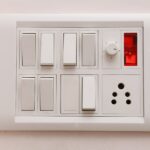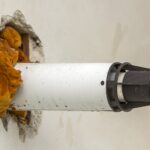Understanding the importance of gas detectors
Gas detectors play a crucial role in maintaining workplace safety. These devices are designed to identify the presence of harmful gases in the environment. They can detect a wide range of gases, including carbon monoxide, methane, and hydrogen sulfide. Early detection of these gases can prevent accidents and save lives. Modern gas detectors https://onninen.pl/en/products/Safety-and-fire-protection/Gas-detectors are equipped with advanced sensors that can detect even trace amounts of hazardous gases. Many industries, such as oil and gas, chemical manufacturing, and mining, rely heavily on these devices. Proper installation and maintenance of gas detectors are essential for their effective operation.
There are two main types of gas detectors: portable and stationary. Portable detectors are handheld devices that can be carried by workers. They are ideal for personal monitoring and temporary gas detection needs. Stationary gas detectors, on the other hand, are fixed in place and provide continuous monitoring. These devices are typically installed in areas where gas leaks are most likely to occur. Both types of detectors have their unique advantages and applications. The choice between portable and stationary detectors depends on the specific requirements of the workplace.
Gas detectors use various detection methods to identify gases. Some common methods include electrochemical sensors, infrared sensors, and catalytic bead sensors. Each method has its strengths and is suited for detecting specific types of gases. For instance, electrochemical sensors are excellent for detecting toxic gases, while infrared sensors are ideal for combustible gases. Understanding these detection methods can help in selecting the most appropriate gas detector for a particular application. Regular calibration and testing of gas detectors ensure their accuracy and reliability.
Benefits of implementing Stationary gas detectors
Stationary gas detectors offer continuous monitoring of fixed locations. These devices are particularly useful in large industrial facilities where gas leaks can occur in multiple areas. They provide 24/7 surveillance, ensuring that any gas leak is detected immediately. Stationary gas detectors https://onninen.pl/en/products/Safety-and-fire-protection/Gas-detectors/Stationary-gas-detectors can be integrated with facility-wide alarm systems. This integration allows for quick evacuation and emergency response in case of a gas leak. Many modern stationary detectors can also be connected to automated shutdown systems, further enhancing safety measures.
One significant advantage of stationary detectors is their ability to monitor hard-to-reach or hazardous areas. These devices can be installed in confined spaces, near potential leak sources, or in areas with limited human access. Stationary detectors are available in various configurations to suit different environments. Some models are designed to withstand harsh industrial conditions, including extreme temperatures and high humidity. The lifespan of a well-maintained stationary gas detector can exceed 10 years, making it a cost-effective long-term solution.
Stationary gas detectors contribute significantly to regulatory compliance. Many industries are required by law to have continuous gas monitoring systems in place. These detectors help businesses meet safety standards and avoid potential fines or legal issues. Some advanced stationary detectors come with data logging capabilities. This feature allows for trend analysis and helps in identifying recurring gas leak patterns. By analyzing this data, businesses can implement preventive measures and improve their overall safety protocols.
Best practices for gas detector installation and maintenance
Proper installation of gas detectors is crucial for their effectiveness. The placement of detectors should be based on a thorough risk assessment of the facility. Factors to consider include the physical properties of the gases being monitored, potential leak sources, and air flow patterns. It’s recommended to install detectors at both high and low levels, as different gases have varying densities. For example, hydrogen is lighter than air and will rise, while heavier gases like propane will sink. Consulting with a gas detection specialist can ensure optimal placement of detectors.
Regular maintenance is essential for the longevity and reliability of gas detectors. This includes routine cleaning, calibration, and functional testing. The frequency of maintenance depends on the type of detector and the environment in which it’s used. As a general rule, most manufacturers recommend calibrating gas detectors every 3 to 6 months. However, in harsh environments, more frequent calibration may be necessary. It’s important to keep detailed records of all maintenance activities. These records can be valuable for troubleshooting and compliance purposes.
Training employees on the proper use and interpretation of gas detectors is crucial. This includes understanding alarm signals, evacuation procedures, and basic troubleshooting. Regular drills should be conducted to ensure that all employees know how to respond in case of a gas leak. It’s also important to have a clear protocol for reporting and addressing any issues with gas detectors. Implementing a robust maintenance and training program can significantly enhance the effectiveness of a gas detection system.
- Conduct a thorough risk assessment before installing gas detectors
- Place detectors at appropriate heights based on gas properties
- Perform regular calibration and functional testing
- Train employees on proper use and emergency procedures
- Keep detailed maintenance records





